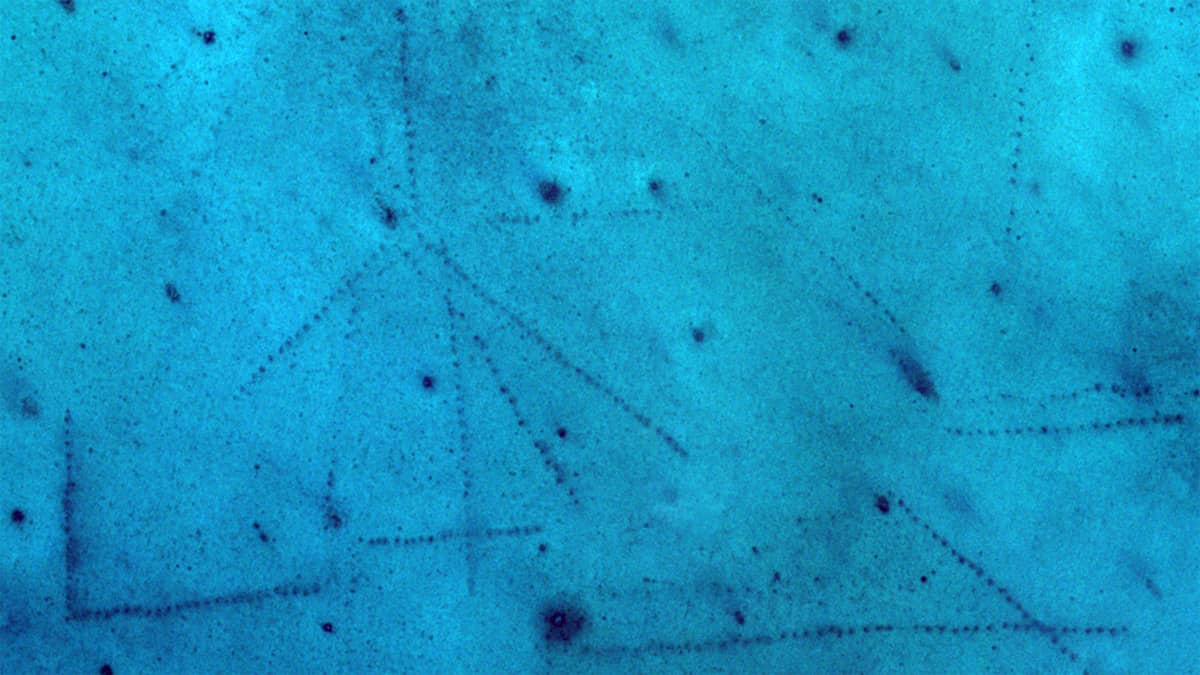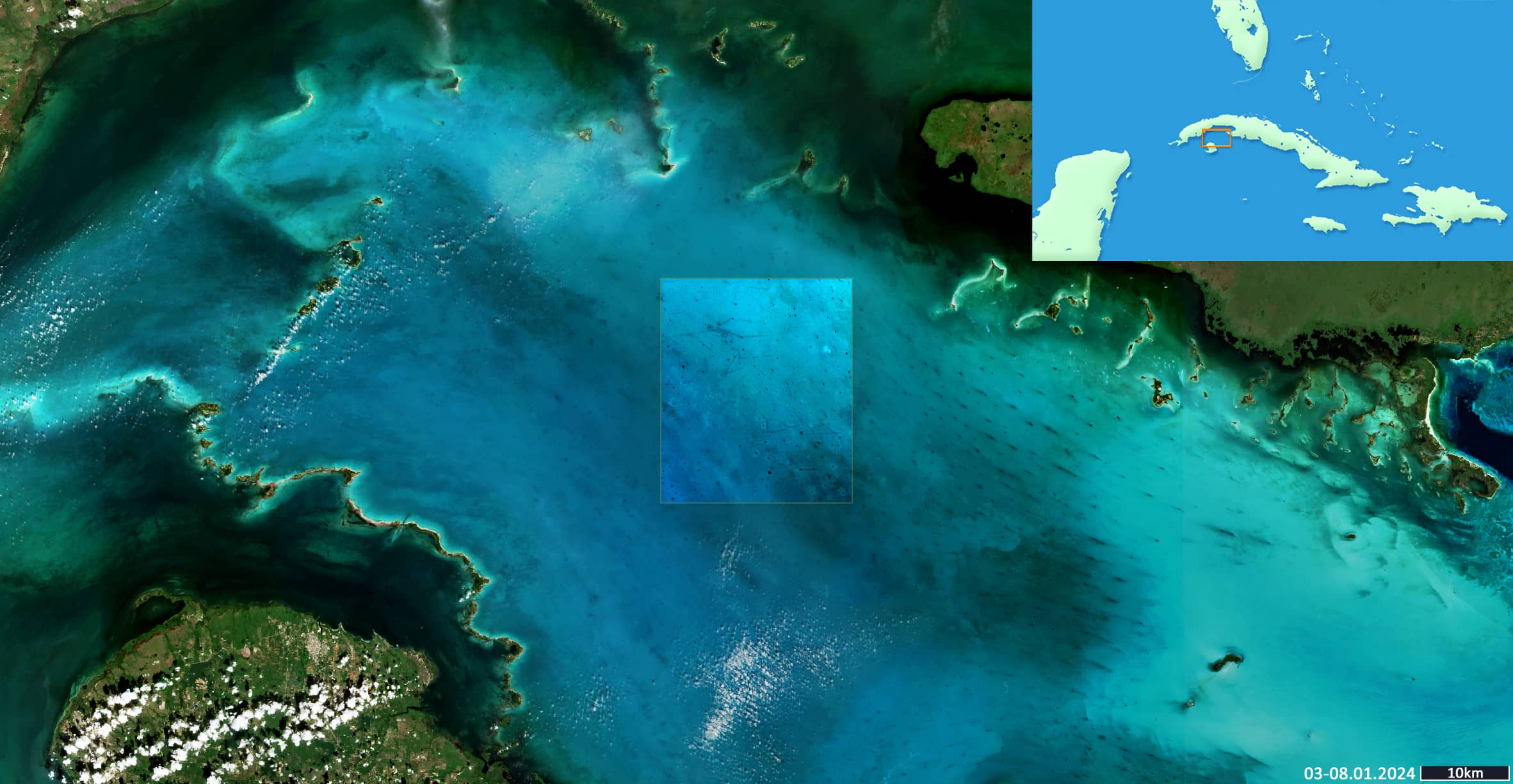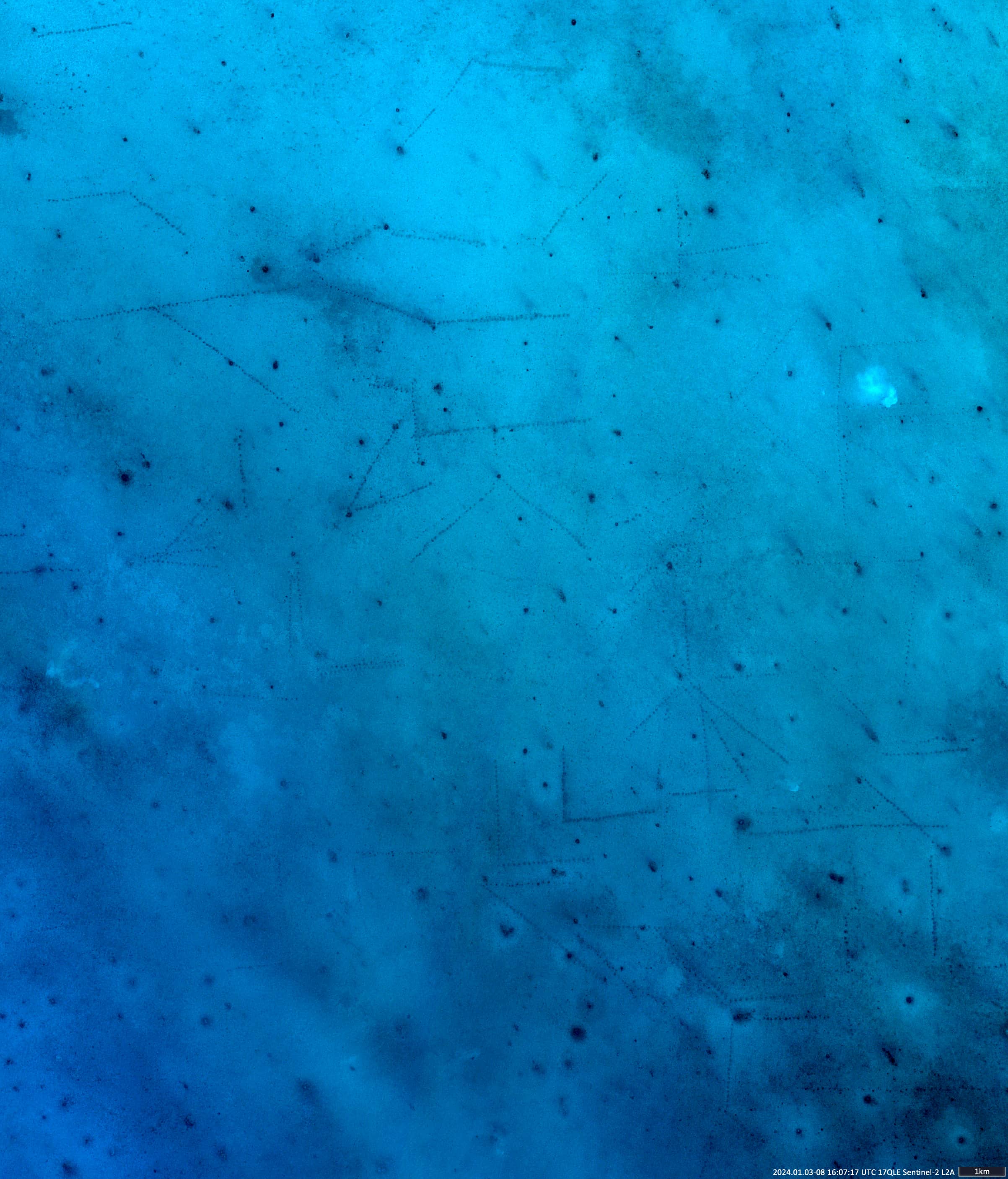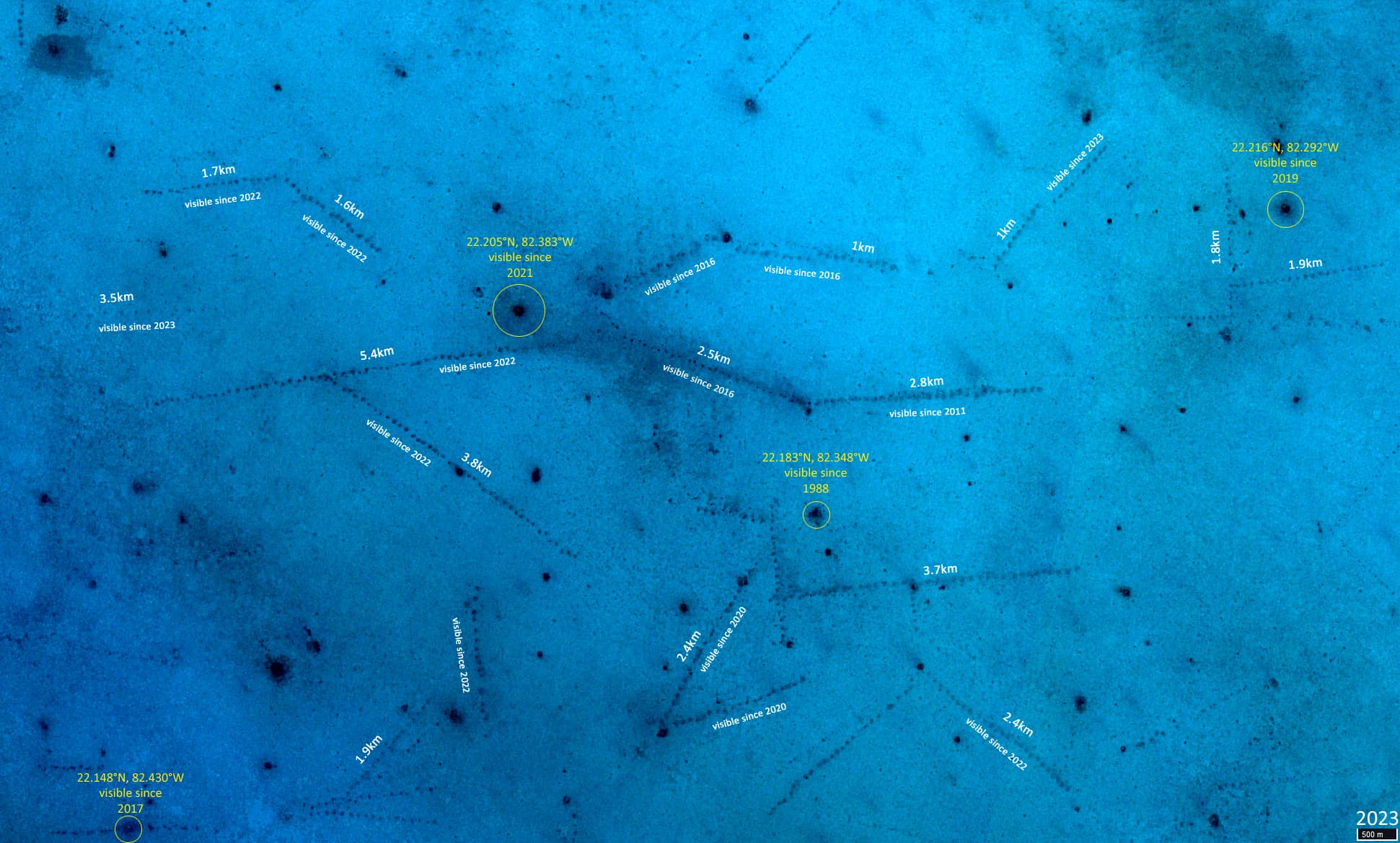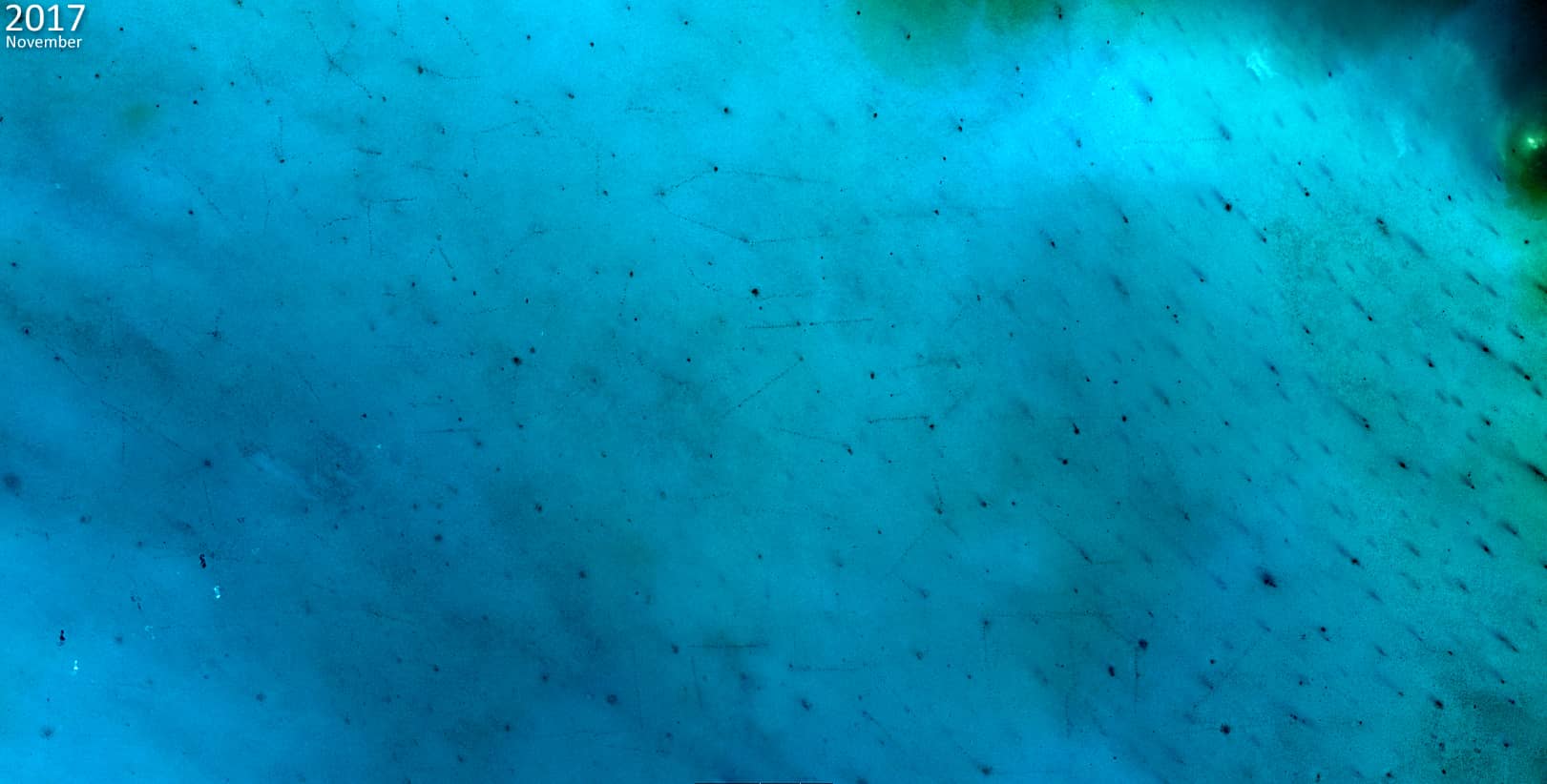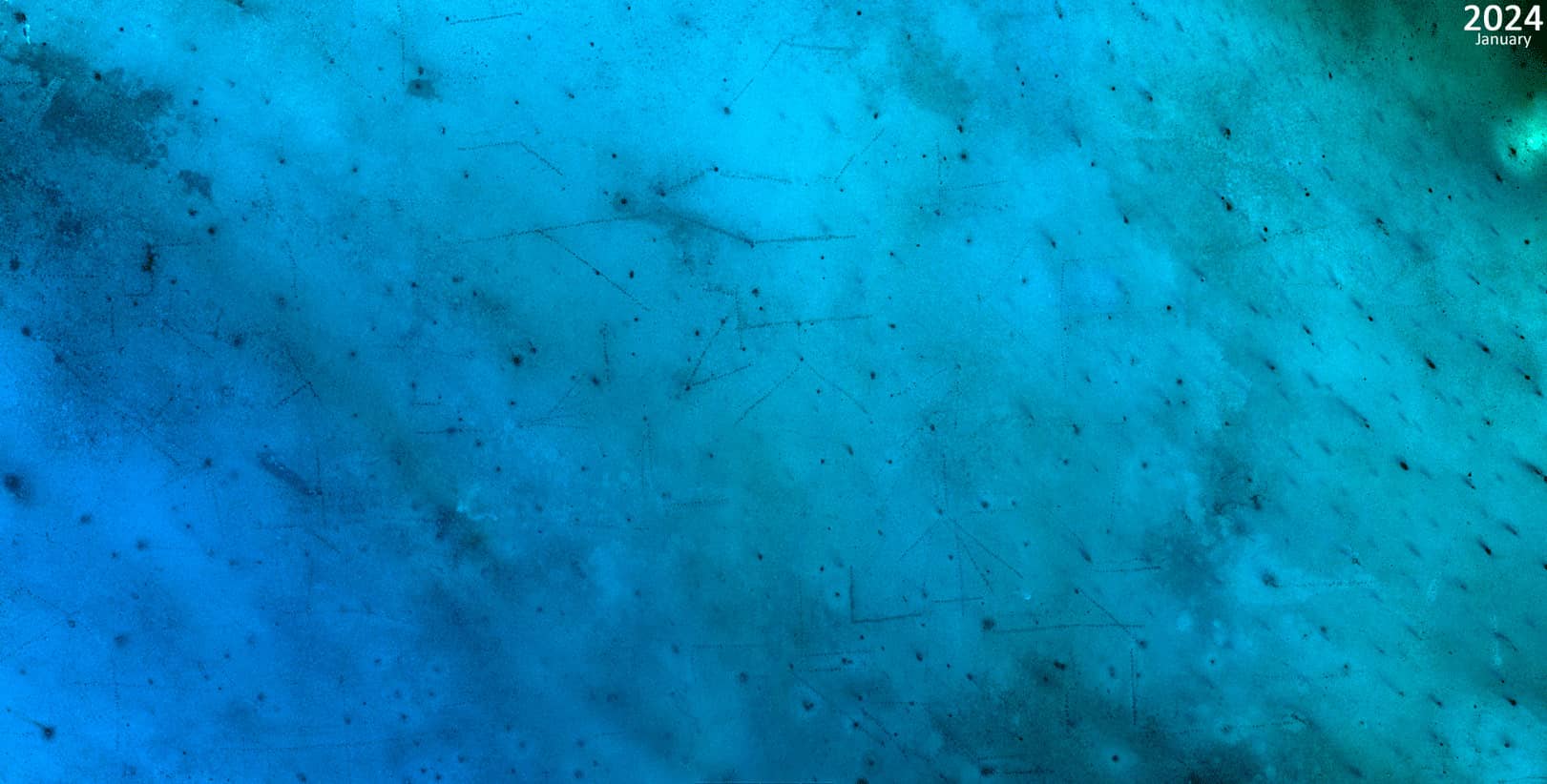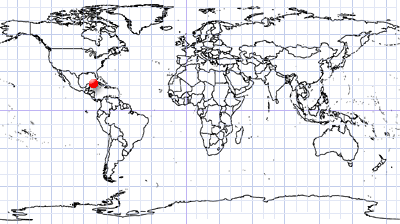
Batabanó Bay
Caribbean Sea | Off southwestern Cuba
Dates of acquisition:
- December 12th, 2023 | 16:07:17 UTC
- January 3rd, 5th, 8th, 2024 | 16:07:17 UTC
Sensor: Sentinel-2 L2A
Coordinates: ca. 22.15°N, 82.33°W
The waters of the Caribbean Sea are characterised by their purity and transparency. Where the water is shallow, the seabed and surface structures are clearly visible.
When observing the coastal waters of Cuba, ]strange straight lines stand out at the bottom of Batabanó Bay, whose shape is most likely the result of human activity (Figure 1; rectangular area 21x24km, square 500km2, with the centre at 22.15°N, 82.33°W). These lines often “connect” points that appear on the images as thick dark dots or small round spots of dark colour (Figure 2). The lines themselves consist of spaced about 80-100m apart, and in some cases 170-200 metres. The length of the lines varies from 1 to 6 kilometers. The direction seems random and sometimes the lines cross each other (Figure 3).
What could this be?
The Gulf of Batabanó, a shallow-water area in the southwest of the island of Cuba, south of Havana, has an approximate area of 20 thousand km2 and an average depth of about 6 metres. The island of Juventud separates the gulf from the Caribbean Sea.
Much of the bottom of the bay is sand or silt with sparse vegetation and rocks. It is an unspoilt environment in terms of pollution from heavy metals, industrial waste or agricultural activities.
High-resolution data from Sentinel-2 and Landsat 1-8 satellites reveal changes in the seabed area since 1980. Mysterious lines observed from 2006 onward fluctuate, with increased occurrences by 2024, while some appear in the 1988 image, indicating dynamic changes in the past 45 years. Please consider Figure 3 for the timely occurrence of structures and Figure 4 to compare images from November 2017 and January 2024.
So what is it?
It has been known since the nineteenth century that commercial sponges are caught or collected in Cuba.
Sponges are primitive multicellular aquatic organisms that live on a variety of substrates and come in a variety of shapes and colours and sizes. The main commercial value of natural sponges is their ability to hold large amounts of water. Some sponges can retain organic material such as plankton, bacteria and even viruses suspended in the water, and are also known to be acid-resistant and easier to clean than man-made materials.
Unpolluted coastal zones are especially rich in this type of species. And Batabanó Bay is a very suitable place for the life and artificial breeding of sponges.
Sponge harvesters used to take advantage of the shallow waters of the bay, using a glass-bottomed bucket and a long stick with a hook to separate the sponge from the substrate.
Then came aquaculture farms, where man-made underwater structures were created to grow sponges artificially.
Metal poles are buried in the seabed in a few rows about 3-4 metres apart. Long cables are suspended from them, which in turn act as a base, between which ropes are stretched, on which cords with sponges are hung vertically at a distance of 30 cm.
These structures can be seen as lines on satellite images with a resolution of 10 metres per pixel.
Cultured sponges reach even larger sizes than sponges in their natural environment and have a more rounded shape.
Projects to increase sponge cultivation in Cuba are still at the demonstration stage.

